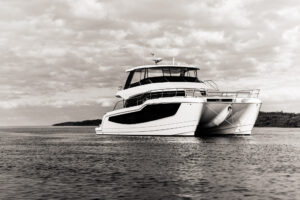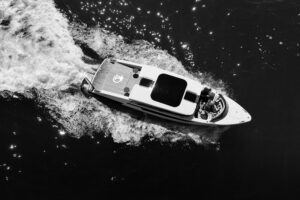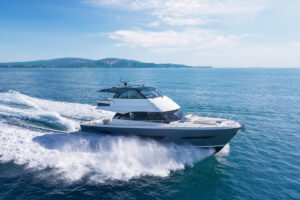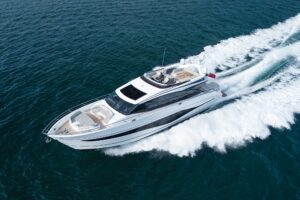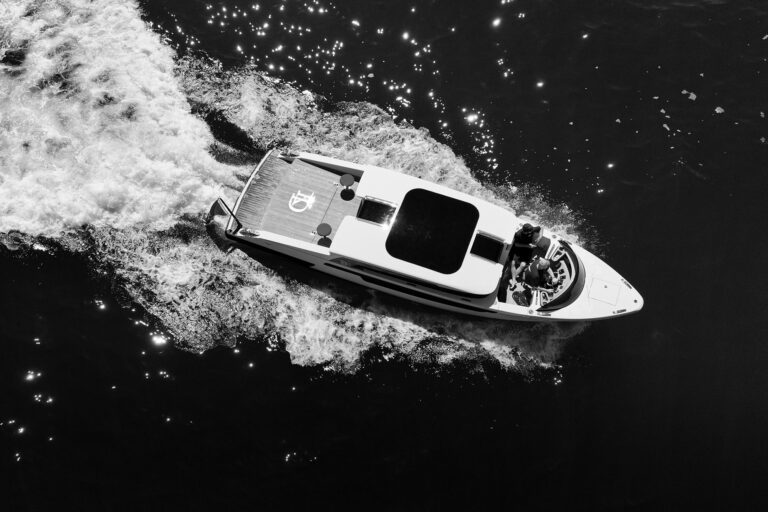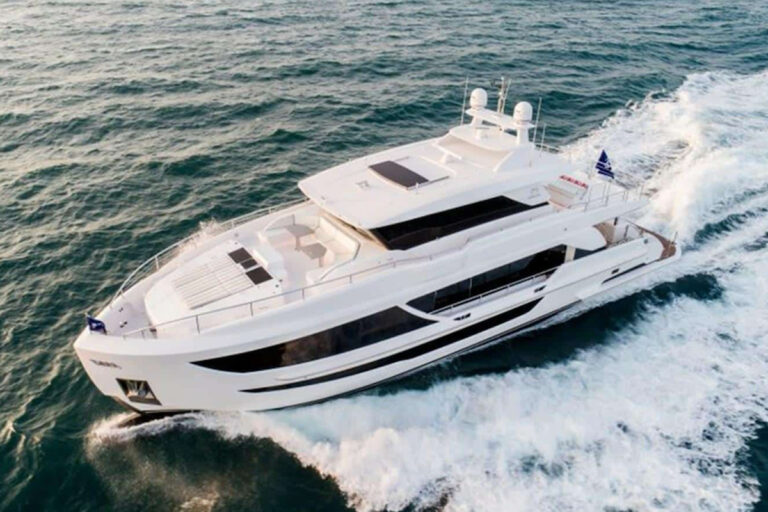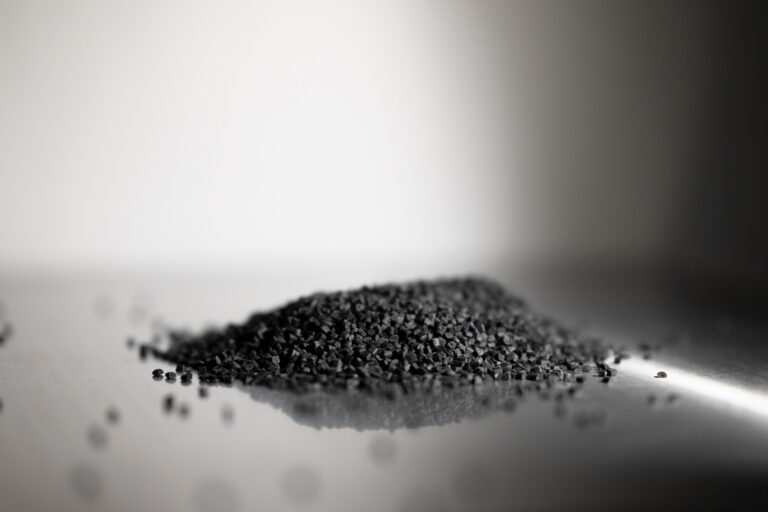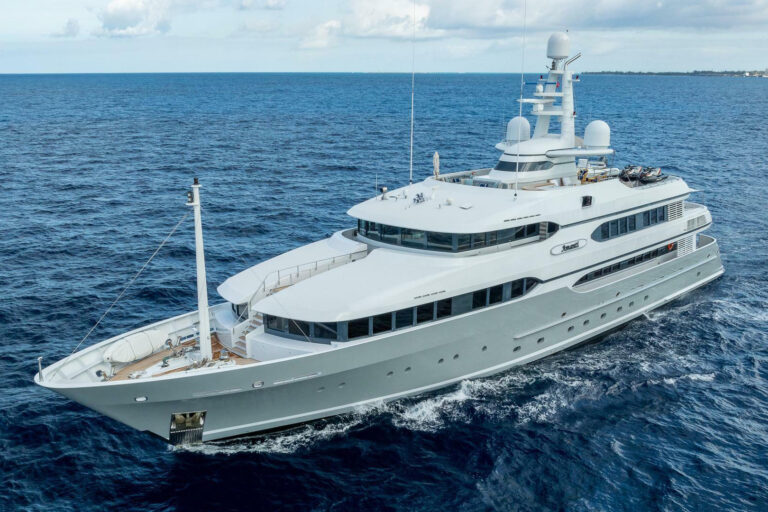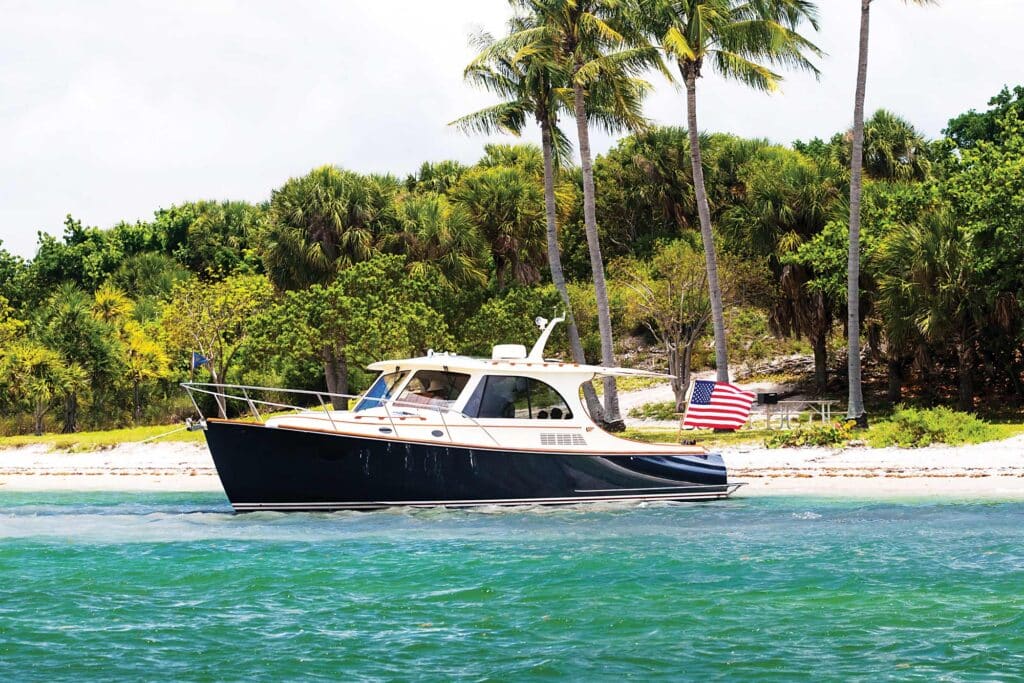
Standing at the helm of Dasher, the first Hinckley Yachts Picnic Boat ever built, I got to experience the past at the same time that I was meeting, and driving, the boatbuilder’s future offerings.
You see, the 36-foot, 28-year-old Dasher is the testing platform for Hinckley’s new SilentJet technology, which was developed in partnership with Twin Disc. It’s a diesel-electric-hybrid system that is currently available on the Hinckley Picnic Boat 40 S, and it follows on the heels of the company’s first all-electric 29-footer, also known as Dasher, which launched in 2017. The lessons learned building the all-electric boat led to SilentJet for the larger vessels.
There are several key elements of SilentJet that make it an intriguing proposition: Working in concert with water jets and the Hinckley JetStick, the boat operates in some serious quietude around the dock, in the harbor and underway at speeds up to about 7 knots. The only sounds are water bubbling out of the jets and running under the hull. Additionally, an owner has speed when desired.
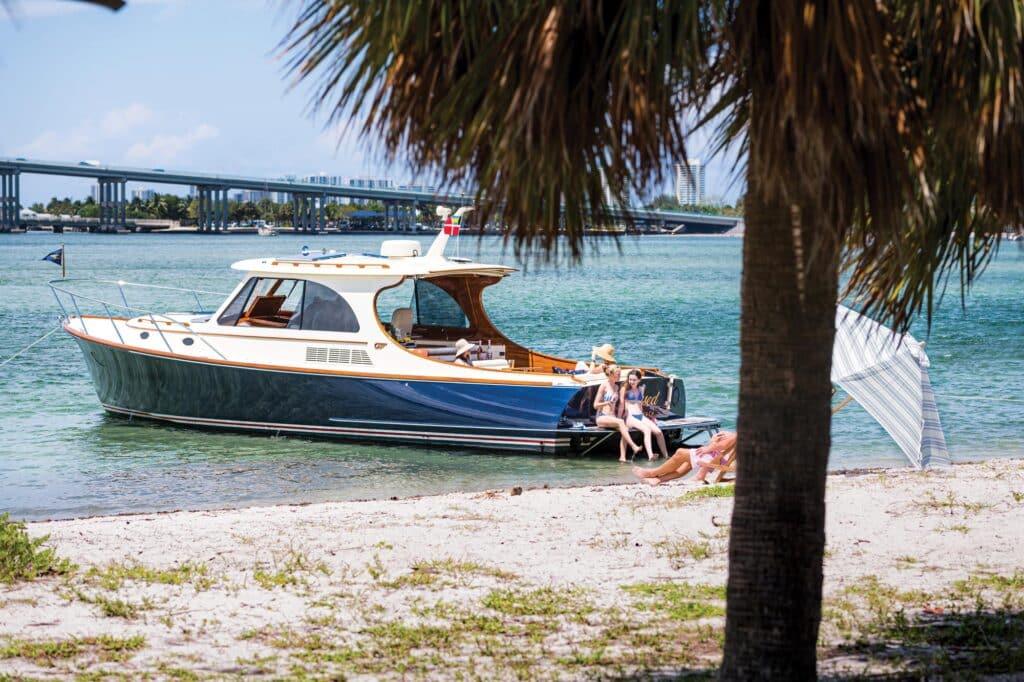
The helmsman simply engages the throttles, and the intuitive system realizes more speed is required, transitioning the boat from the electric motors to the diesels. In the case of the 40 S, traditional power will be twin 550 hp Cummins diesels, while the electric motors will be twin 90 kW setups, with an 80 kWh battery. (The 40 S should cruise about 35 knots on the diesels.) Bring the throttles back, and slow down to below 7 knots, and the 40 S switches back to electric. And when the boat is running on its diesels, the batteries are recharging. Total recharge time: 30 to 45 minutes underway and about 8 to 10 hours on shore power.
SilentJet also lets owners run all onboard systems off battery without the need for a generator. And during my day on board Dasher, we tested the theory.
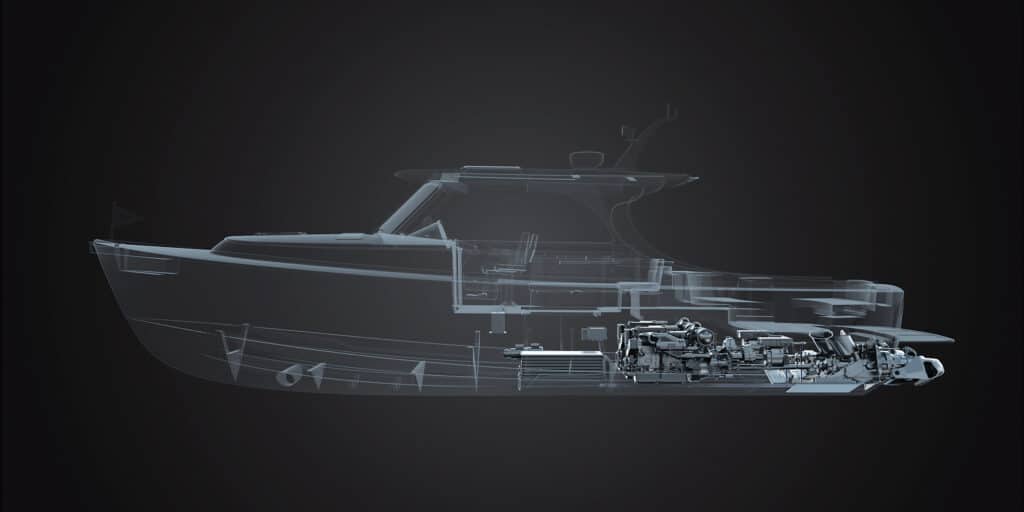
I eased the boat out of the harbor in Portsmouth, Rhode Island, and aimed toward a mooring field that Scott Bryant, Hinckley’s vice president of sales and marketing, had chosen for our systems check. Once clear of the no-wake zone, I brought up the throttle, and the single 570 hp FPT diesel spooled up and shot Dasher across the bay in no time. As I approached the mooring field, I brought the throttle down, and the system seamlessly reverted Dasher back to all-electric operation.
Once we picked up the mooring ball, Bryant had a chef show us how efficient the all-battery setup works. After turning on all the galley appliances as well as an all-electric grill in the cockpit, the chef prepared a steak-and-lobster-roll lunch with all electric-hungry systems engaged. After sitting on the hook for a couple of hours, the battery capacity had barely budged. Loss was nominal. So, for typical dayboating, the SilentJet system looks like a win.
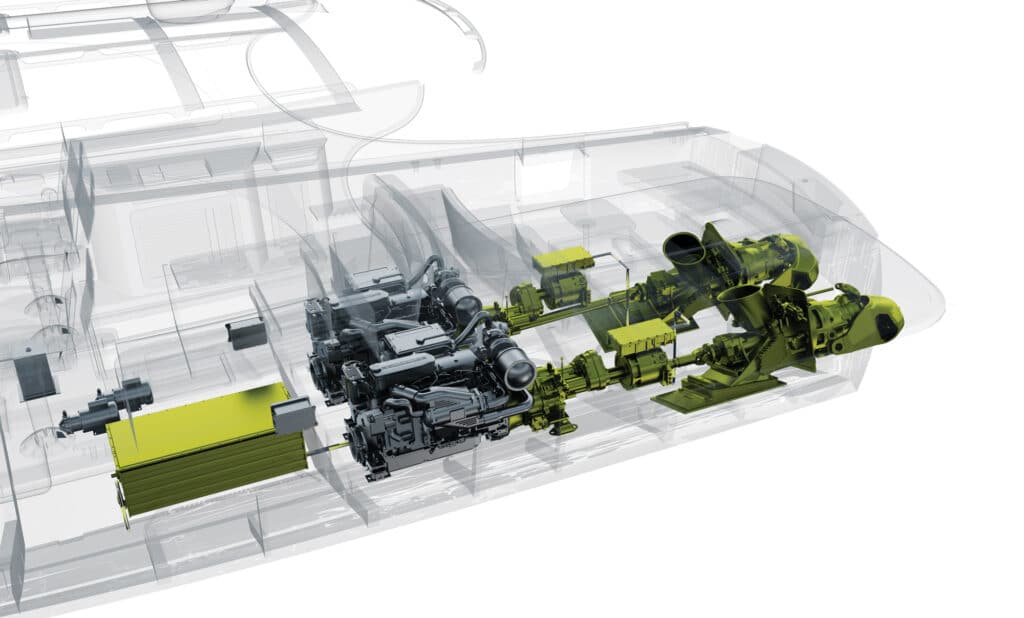
All too soon, I was easing Dasher out of the mooring field to do some more running and experiencing of the system in action. It was green across the board, and everything about SilentJet worked as advertised.
The first Hinckley Picnic Boat 40 S with SilentJet should launch in 2024, which may seem like a distant future. But it’s closer than you think, and you won’t even hear it coming.
Commonsense Solutions
“We know our clients want what’s next, and they also want commonsense solutions,” says Geoff Berger, Hinckley’s CEO. “With SilentJet, you can travel farther with the hybrid-diesel system than with Dasher’s electric platform. Furthermore, we learned that electric-powered water jets are much quieter and produce less vibration than traditional propellers.”
Formidable Power
While the Hinckley Picnic Boat 40 S with SilentJet will have twin 550 hp Cummins diesels, the prototype 36-foot Dasher we got aboard was outfitted with a single 570 hp FPT diesel. The formidable motor was matched with Twin Disc’s electric motor and transmission, which then were paired with a Hamilton water jet.

